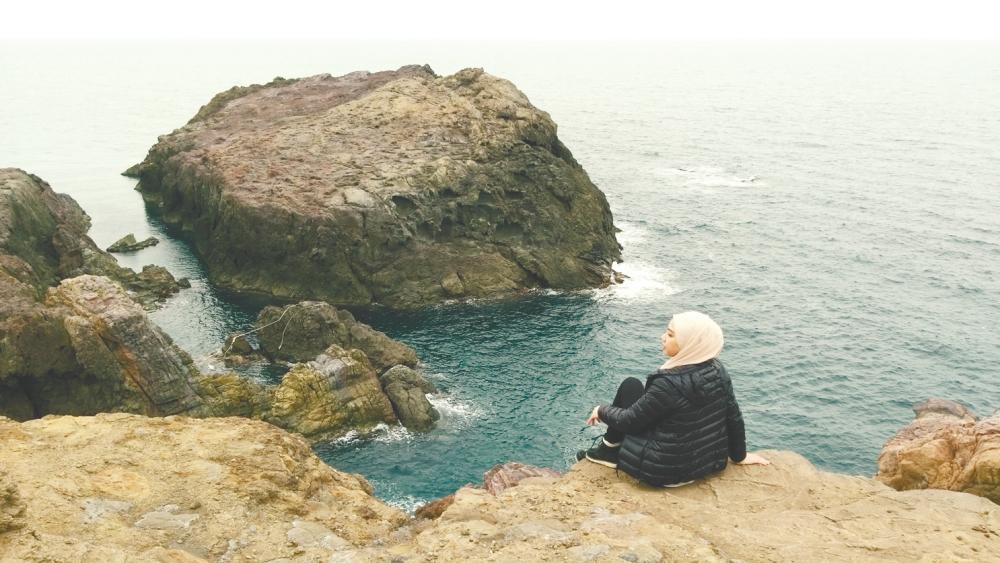BY ANANSA JACOB
DURING a recent travel assignment, courtesy of AirAsia X, to Fukuoka, Japan, I had the chance to test out the Samsung Galaxy A9 (2018) smartphone.
With its distinctive four rear main cameras – a 24MP f1.7 wide lens, 8MP f2.4 ultra-wide lens, 10MP f2.4 telephoto lens, and 5MP f2.2 wide lens – and 24MP f2.0 wide lens front camera, I was looking forward to seeing how photographs taken with the device would turn out.
The review model I was given came in an adorable bubblegum pink, although I much preferred its other colour variants of the more neutral caviar black, or even the lemonade blue.
The glossy back cover had a slightly textured feel, and did well to hide fingerprint marks, something I was worried about.
Despite its metal frame, the Galaxy A9 is light, at just 183g. It is also slim and perfect for either two-hand or one-hand use. It runs on the Octacore Qualcomm Snapdragon 660, which means that it’s fast and efficient in most situations.
Aside from the power button and volume rocker located on the right of the device, the Galaxy A9 also comes with a dedicated Bixby button positioned on the left.
I lost count of the number of times I unintentionally launched the Samsung virtual assistant when adjusting the phone’s volume controls. It’s the one flaw in the otherwise sleek design of the device.
The screen is a pleasing 6.3in 1080x2220 Amoled display. Colours look bright, and reading text and watching HD videos was bliss. I especially appreciated the phone’s blue light filter, easily accessible on the drop-down Quick Panel.
The device comes with Android 8.0 Oreo out of the box. Sadly, I had to return it just days before the arrival of the systems update to Android 9.0 Pie, which would have also come with the improved One UI interface.
When it came to taking pictures with the Galaxy A9, the results were mixed to say the least. The weather didn’t help as it was mostly downcast and raining the whole trip.
Selfies taken with the 24MP f2.0 wide lens front camera were in automatic ‘beauty mode’, which lent an air of artificial fake-ness to most of the selfie images I took.
The rear cameras fared a little better. Like its more premium brothers, the phone allows you to play with depth of field, switching between telephoto mode and ultra-wide with just a tap of a button on the screen.
That was very useful when I had to take shots of tall structures or objects. The only thing is that ultra-wide shots tend to have a fish-eye effect on the edges, which may not sit well with some people.
One feature I enjoyed playing with was the Live Focus mode, which lets you set the background blur on close-up subjects.
The best part is that you can go back later to the image and adjust the blur effect if you change your mind.
The cameras also do an excellent job of picking out shadows and light outdoors, allowing you to capture more detail in the shot, and even lighting up some darker areas.
However, I have to admit that despite the enjoyment I got out of using the device, most photos I took with the Galaxy A9 have this unnatural look to them.
It is especially obvious when you zoom in on the details, and see the slight feathering effect on the edges. It doesn’t help that photos also have a slight blue tinge to them.
It performs best outdoors – no surprise –while almost all indoor shots, especially those taken in low light, look as though they were processed by one of those paint effect filters.
I suppose that I should be a little more forgiving, since this is not a premium device, but considering Samsung’s advancements in camera technology elsewhere, some of it should have trickled down to the mid-range devices.
Another thing I noticed was that the device struggled in cold weather.
In Japan’s chilly early March weather conditions, with temperatures going as low as 4°C and coupled with some light showers, the phone would freeze up (no pun intended).
The camera function either turned itself off, or wouldn’t snap until I closed the app and opened it again.
Fortunately, it proved to be water-resistant, without any side effects from the rain.
All the same, I would caution against taking it on a winter holiday. It definitely performs best as a fair weather mobile device.
And with a retail price of RM1,999, it’s good enough for those who want a decent mid-range phone.














